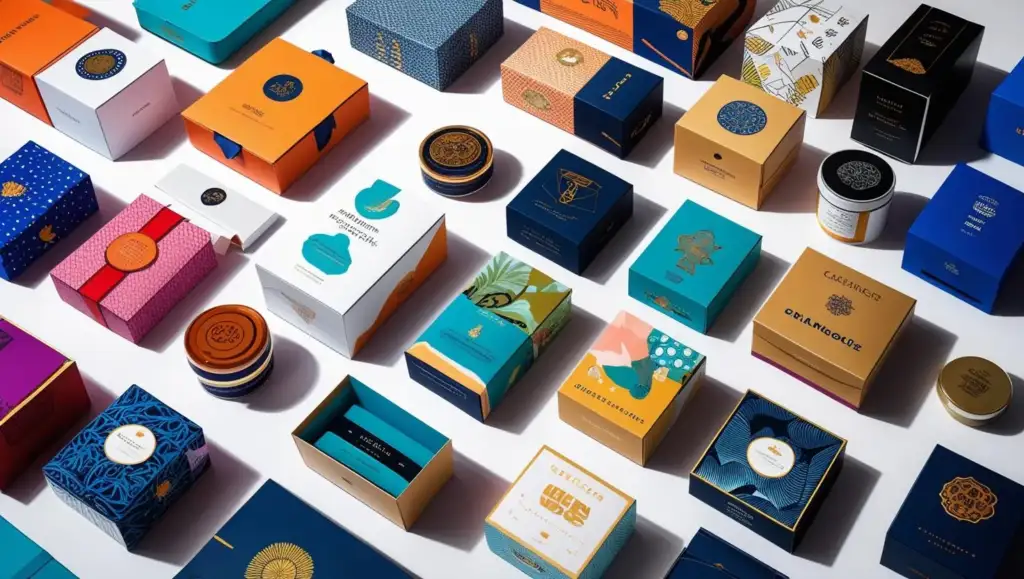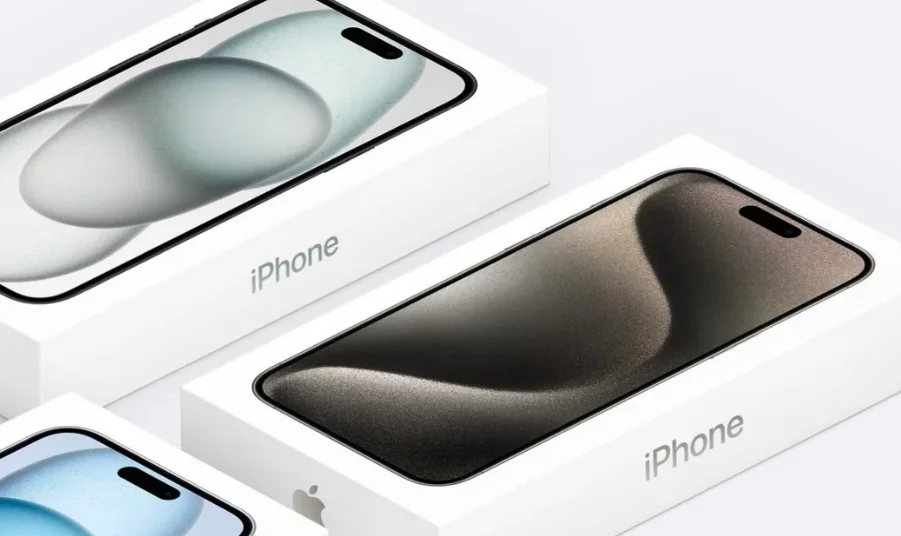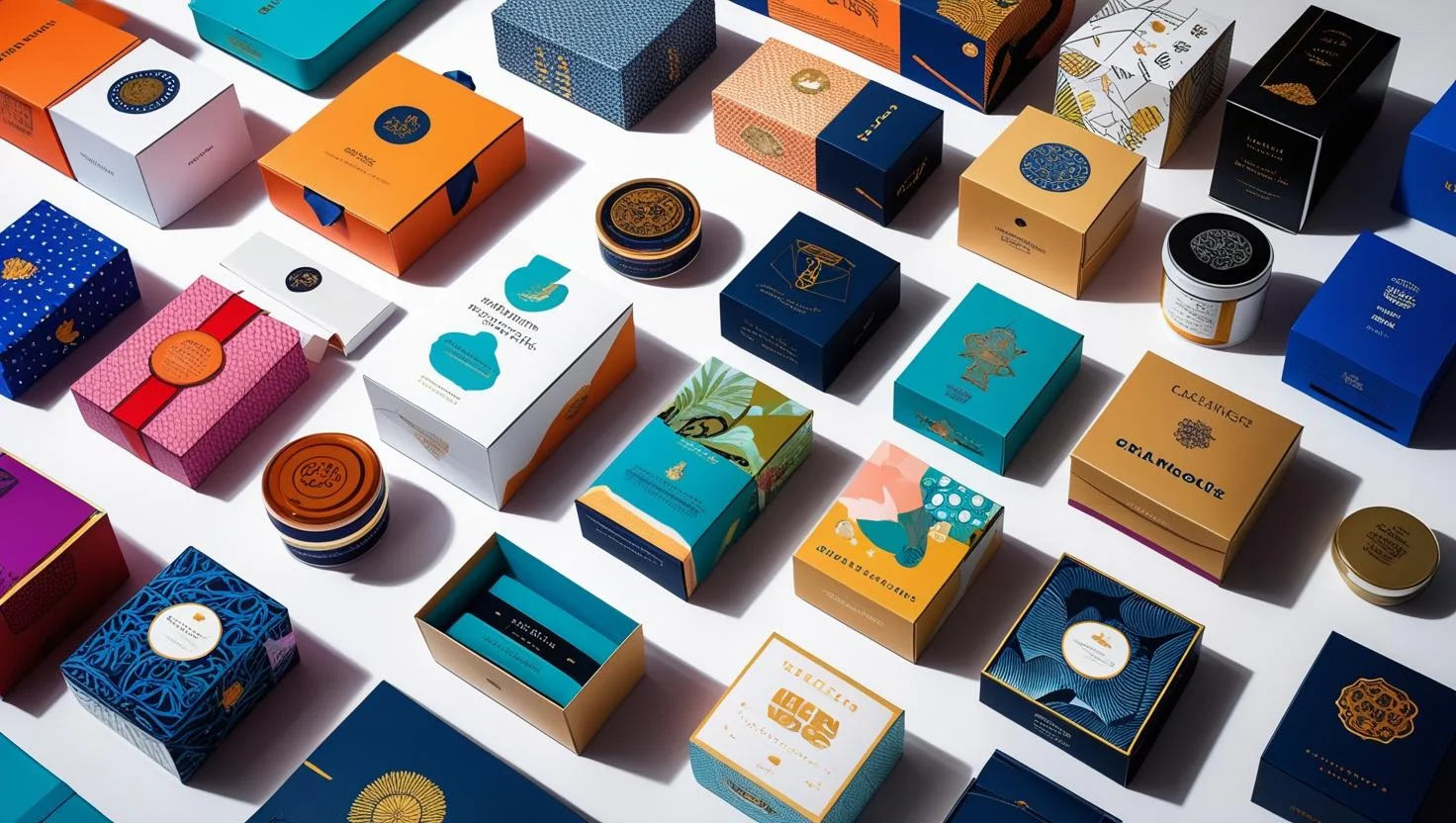Ever bought something just because the packaging looked great? You’re not alone. Whether it’s a sleek iPhone box, an eco-friendly skincare tube, or a snack bag that practically jumps off the shelf- packaging design influences what we choose, what we remember, and what we trust. In today’s saturated market, it’s not just about what’s inside—how it’s presented speaks volumes. Packaging is more than a container; it’s your brand’s first impression, sales pitch, and identity all in one.
This article dives into the world of packaging design—why it matters, how it builds brand identity, the types of packaging used in different industries, real-world examples, and expert tips to help your brand stand out.

What Is Packaging Design?
Packaging design is the process of creating the exterior of a product. This includes choices in materials, structure, colors, typography, and graphics. It’s where graphic design meets functionality and branding. A good packaging design protects the product, tells a story, and engages customers in a visual and tactile experience.
From minimalist soap bars to vibrant beverage cans, every element—from the shape of the box to the texture of the label—contributes to how consumers perceive the product. In essence, it’s marketing, branding, and design rolled into one powerful layer.
Why Packaging Design Matters
Packaging is often the first physical interaction a consumer has with your brand. Here’s why it’s a game-changer:
- First Impressions Count: Shoppers often decide in seconds. Good design can make the difference between being picked up or passed over.
- Shelf Impact: In retail, your package is your silent salesman. Bold colors, clean fonts, and innovative shapes catch attention fast.
- Unboxing Experience: Especially in e-commerce, the unpacking process is part of the customer journey. A memorable unboxing can increase satisfaction and lead to social sharing.
- Consumer Trust: Professionally designed packaging signals quality, safety, and credibility.
How Packaging Design Builds Brand Identity
Your brand isn’t just a logo—it’s a story, a personality, and a promise. Packaging helps communicate that.
- Color Psychology: Think of Tiffany & Co.’s iconic blue box or Coca-Cola’s red cans. Colors evoke emotion and are crucial in brand recognition.
- Typography & Layout: Fonts reflect tone. A luxury brand might use elegant serif fonts, while a playful snack brand could use bold sans-serif.
- Consistency: Your packaging should match your website, ads, and social media branding. This consistency reinforces brand identity.
- Materials & Sustainability: A brand that promotes eco-conscious values should reflect that in biodegradable or recyclable packaging.
In short, packaging acts as an ambassador for your brand. It speaks on shelves, in mailboxes, and on social feeds—telling your audience what you’re about before they even try the product. That’s how packaging design builds brand identity in powerful and lasting ways.
Types of Packaging Design
Understanding packaging types helps you choose what fits your product and brand strategy:
- Primary Packaging – Directly holds the product (e.g., a bottle of shampoo).
- Secondary Packaging – Groups primary packages (e.g., a box containing multiple shampoo bottles).
- Tertiary Packaging – Used for bulk handling and transport (e.g., shipping cartons).
Based on Material:
- Paper & Cardboard – Lightweight, customizable, eco-friendly
- Plastic – Versatile and durable, though less eco-conscious
- Glass – Premium feel, recyclable, often used for food and beauty
- Metal – Common in beverages, luxury tins
Based on Style:
- Minimalist – Clean, elegant, often premium
- Bold & Colorful – Eye-catching, youthful, energetic
- Eco-Friendly – Natural textures, earthy tones, biodegradable
- Functional – Practical design for storage, opening, resealing
Examples of Iconic Packaging Design
- Apple: Their white boxes with snug product fit reflect innovation and precision. Minimalism speaks luxury and modernity.
- Coca-Cola: The curved bottle and red-white palette make it instantly recognizable and emotionally nostalgic.
- Glossier: Uses millennial pink, resealable pouches, and sticker packs to make unboxing Instagram-worthy.
- Tiffany & Co.: That signature blue box doesn’t just hold jewelry—it holds a legacy of elegance and exclusivity.

These brands use packaging as a direct reflection of their identity. Every color, curve, and cardboard flap is part of a bigger branding strategy. They show us exactly how packaging design builds brand identity.
Tips for Effective Packaging Design
- Know Your Audience: Design choices should align with what your customers value.
- Stay True to Your Brand: Every detail should reflect your brand’s tone, mission, and promise.
- Function First: Great design is useless if the packaging is hard to open, store, or transport.
- Be Sustainable: Eco-conscious packaging appeals to modern consumers and supports brand responsibility.
- Prototype & Test: Always test your packaging with real users to uncover issues before mass production.
Conclusion: Designing for More Than Looks
In the world of branding, packaging is more than a shell—it’s a voice. It tells your story, expresses your values, and often determines whether someone buys your product—or someone else’s. The right packaging design doesn’t just protect what’s inside—it reveals what your brand stands for.
From first impressions to long-term recognition, packaging is your visual handshake. Whether you’re a startup or an established company, investing in great packaging design is investing in the heartbeat of your brand. And that’s exactly how packaging design builds brand identity that lasts.

